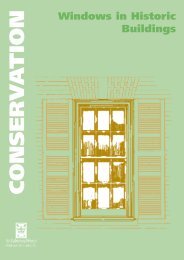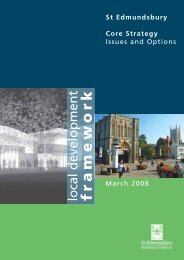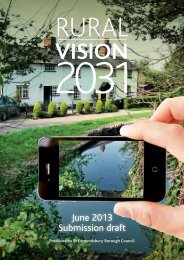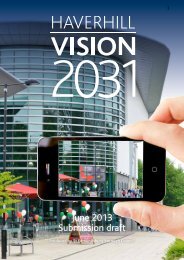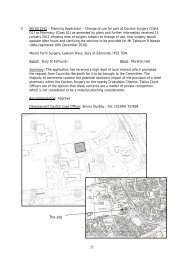St Edmundsbury Core Strategy (December 2010)
St Edmundsbury Core Strategy (December 2010)
St Edmundsbury Core Strategy (December 2010)
Create successful ePaper yourself
Turn your PDF publications into a flip-book with our unique Google optimized e-Paper software.
development) could not occur (e.g. supply of water, utilities or access). Theseare infrastructure types that must be provided up-front to supportdevelopment;b „Essential‟ infrastructure required to ensure development can beimplemented with no detrimental effects on site, to the settlement andbeyond. Infrastructure in this category will be essential to achieving growth ina timely and sustainable manner, and which must be delivered at least in themedium to long term or to allow later phases to proceed, but where (subjectto location) a short term alternative might be possible (e.g. school provision,where the possibility exists to bus children to a nearby town or village); andc „Required‟ infrastructure to ensure sustainable communities are created. Thiscategory includes infrastructure which is deemed necessary by virtue oflegitimate policy objectives (e.g. around access to amenities) and the desire toachieve high quality and sustainable development.8.16 For clarification, the third category „Required‟ does not imply that it is notlegitimate to seek provision of such infrastructure through s.106 agreements, orother legitimate arrangements, in accordance with the relevant guidance/SPD.8.17 The Borough Council recognises that larger developments could have animpact outside the administrative boundary, e.g. traffic impact. While some workhas been undertaken to assess traffic impact it will be necessary for the otherDPDs to assess wider impact and make the necessary arrangements for themitigation of any such impact.8.18 By definition, the exercise of defining the above is one that is strategic,largely location blind and is a function of policy weight attached before theestablishment of a formal pattern of growth. It should be recognised that it iswholly possible for infrastructure to sit within different categories in differentlocations/developments. As the study seeks to assess a broad spectrum ofinfrastructure classes these have been categorised into the three guidingprinciples „fundamental‟, „essential‟ and „required‟ as set out in the table below.Table 8.1 Infrastructure TypesInfrastructure Type Fundamental Essential RequiredNatural Environment andGreen InfrastructureLocal/National Nature ReservesSports PitchesNon-Pitch Sports AreasAmenity Open SpaceAllotmentsChildren‟s Play AreasXXXXXX81




